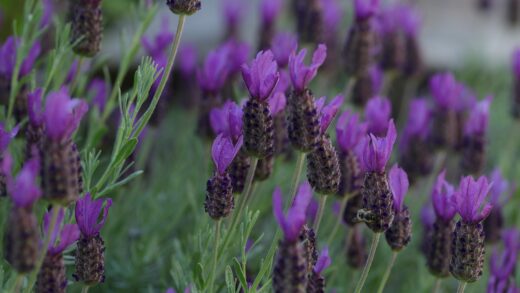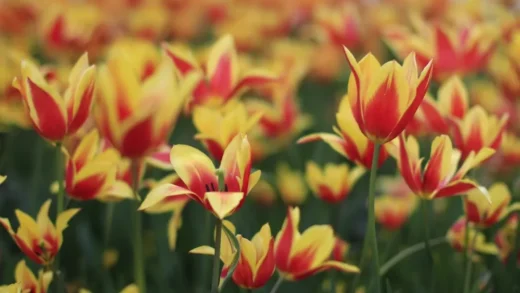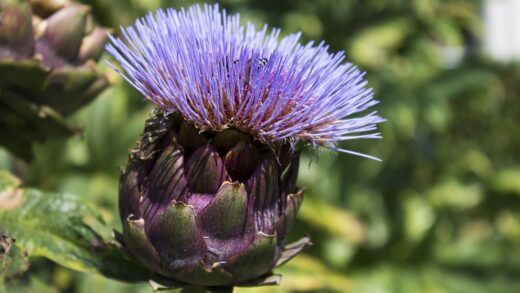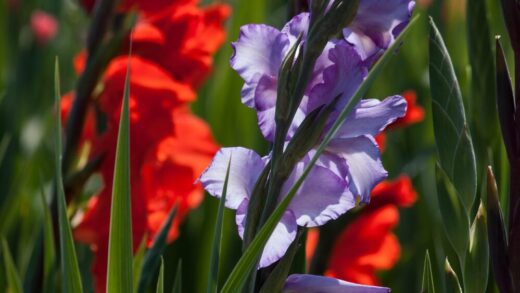Understanding the specific water needs of apple-scented mint is paramount for its cultivation, as proper irrigation forms the very foundation of a healthy, thriving plant. This particular herb has a clear preference for consistently moist soil, a trait that harks back to its natural habitats, which are often found in damp, streamside locations. In a garden setting, replicating these conditions requires a mindful and regular approach to watering. The balance is delicate; while the plant loves moisture, it is equally intolerant of waterlogged soil, which can lead to a host of problems, most notably root rot. Therefore, the gardener’s primary goal is to maintain a steady level of soil moisture without ever allowing the root zone to become saturated and anaerobic. Achieving this equilibrium is the key to unlocking the plant’s full potential, ensuring lush growth and a rich, aromatic harvest.
The frequency of watering will be dictated by a variety of environmental factors, including the climate, the time of year, and the type of soil in your garden. During the hot, dry months of summer, apple-scented mint will naturally require more frequent irrigation to compensate for the higher rate of evaporation from the soil and transpiration from its leaves. In contrast, during the cooler, wetter periods of spring and autumn, your watering duties will be significantly reduced. It is essential to develop a habit of checking the soil regularly rather than adhering to a rigid, predetermined schedule. The simple act of feeling the top few centimeters of soil is the most reliable way to gauge whether the plant needs a drink.
The type of soil plays a crucial role in how often you will need to water. Sandy soils, for example, have large particles and drain very quickly, meaning they will need to be irrigated more frequently. On the other hand, heavy clay soils have very fine particles, allowing them to retain moisture for much longer periods, but they also carry a higher risk of becoming waterlogged. The ideal soil is a well-draining loam amended with organic matter, which strikes the perfect balance between moisture retention and good drainage, making your watering routine more forgiving and effective.
Plants grown in containers have different watering needs compared to those in the ground. The soil in pots heats up and dries out much more rapidly, especially on warm, windy days. This means that potted apple-scented mint will almost certainly require more frequent watering, often daily during the peak of summer. It is crucial to ensure that any container has adequate drainage holes at the bottom to allow excess water to escape freely. Allowing a pot to sit in a saucer full of water for extended periods is a sure-fire way to drown the roots and invite disease.
The importance of consistent moisture
Maintaining a consistent level of moisture in the soil is perhaps the single most important aspect of watering apple-scented mint. This plant does not respond well to a cycle of boom and bust, where the soil is allowed to become bone dry before being flooded with water. Such inconsistency can cause significant stress to the plant, leading to wilting, leaf scorch, and a general decline in vigor. A stressed plant is also far more susceptible to attack from pests and diseases. Therefore, the aim should be to keep the root zone feeling like a well-wrung-out sponge – moist to the touch, but not dripping wet.
Consistent moisture is directly linked to the quality of the herb itself. The production of the essential oils that give apple-scented mint its characteristic fragrance and flavor is at its peak when the plant is healthy and not under stress. When the plant experiences drought stress, even for a short period, it can negatively impact the concentration of these oils. The result is foliage that is less aromatic and flavorful, which defeats one of the primary purposes of growing this culinary herb. By providing a steady supply of water, you are ensuring a continuous harvest of high-quality, fragrant leaves.
Achieving this consistency can be made easier with the use of mulch. Applying a layer of organic mulch, such as wood chips, straw, or shredded leaves, around the base of the plant can be incredibly beneficial. Mulch acts as a barrier, slowing down the evaporation of water from the soil surface, which helps to keep the soil cooler and more evenly moist for longer periods. This reduces the frequency with which you need to water and also helps to suppress weed growth, which would otherwise compete with your mint for available water and nutrients.
The visual cues your plant gives you are also important indicators of its water status. While some wilting on a very hot afternoon can be normal, if the plant remains wilted in the cooler temperatures of the morning, it is a clear sign that it is thirsty and in need of a deep watering. Other signs of underwatering can include yellowing leaves or crispy, brown edges. Conversely, signs of overwatering often include yellowing leaves that feel soft and limp, as well as a general lack of new growth. Learning to read these signals from your plant is a key skill for any successful gardener.
Best practices for irrigation
When it comes to the act of watering itself, there are best practices that can significantly improve the health of your apple-scented mint and the efficiency of your efforts. The most effective way to water is deeply and less frequently, rather than shallowly and often. A deep watering encourages the plant to develop a more extensive and resilient root system that can search for moisture further down in the soil profile. Shallow, frequent watering, on the other hand, encourages the development of a shallow root system that is much more vulnerable to drying out during hot spells.
The timing of your watering is also important. The best time to water your plants is early in the morning. This allows the water to soak deep into the soil and be absorbed by the roots before the heat of the day increases the rate of evaporation. Watering in the morning also ensures that any moisture that gets on the foliage has ample time to dry during the day, which helps to minimize the risk of fungal diseases. Watering in the evening is a secondary option, but it can leave the foliage damp overnight, potentially creating a more favorable environment for pathogens like powdery mildew or rust.
The method of application matters a great deal. As mentioned previously, it is always preferable to water the soil, not the plant. Applying water directly to the base of the plant using a soaker hose, drip irrigation, or even just a gentle stream from a watering can will deliver the moisture exactly where it is needed – to the roots. This method avoids wetting the leaves, which is a primary contributing factor to the development of many common fungal diseases that can plague mint plants. It is a simple change in technique that can make a world of difference.
Finally, always check the soil before you water. It may seem obvious, but many gardeners fall into the trap of watering on a fixed schedule, regardless of the actual conditions. The weather, recent rainfall, and the specific needs of the plant can all change from day to day. By taking a moment to insert your finger into the soil to a depth of a few centimeters, you can get an accurate assessment of its moisture level. This simple, tactile check is the most reliable guide to determining whether it is truly time to water, preventing the common and damaging problems of both over- and under-watering.
Water needs in different growth stages
The water requirements of apple-scented mint can vary depending on its stage of growth. When the plant is young and has just been planted or transplanted, it is in a particularly vulnerable phase. During this establishment period, its root system is still small and has not yet had a chance to spread out into the surrounding soil. Consequently, young plants require more frequent and consistent watering to ensure they do not dry out. Keeping the soil evenly moist for the first few weeks after planting is critical for encouraging strong root development and helping the plant to overcome transplant shock.
As the plant matures and enters its active growing phase during the spring and summer, its water needs will be at their peak. This is the time when it is producing a large amount of foliage and spreading via its rhizomes, processes that require a significant amount of water to fuel. It is during this period that you will need to be most vigilant about checking the soil moisture, especially during hot and dry spells. A lack of water during this peak growth phase can lead to stunted growth, reduced leaf production, and a weaker flavor and aroma.
When the plant begins to flower, its energy focus can shift away from leaf production. While its water needs remain high, this can be a good time to perform a rejuvenation pruning by cutting the plant back. After such a trim, the plant’s immediate water needs will be slightly reduced due to the smaller amount of foliage it has to support. However, as it begins to push out a fresh flush of new growth, it is important to maintain consistent watering to support this new development and ensure the resulting leaves are tender and flavorful.
As autumn approaches and the weather cools, the plant’s growth will naturally begin to slow down as it prepares for winter dormancy. During this time, its water requirements will decrease significantly. It is important to adjust your watering schedule accordingly, allowing the soil to dry out a little more between waterings. Continuing to water with the same frequency as in the summer can lead to waterlogged soil, which is particularly dangerous as the plant enters dormancy, as it can cause the roots to rot over the winter.
Adjusting for container gardening
Growing apple-scented mint in containers requires a more attentive approach to watering compared to growing it in the ground. The limited volume of soil in a pot can dry out extremely quickly, especially on hot, sunny, or windy days. This means that a potted mint plant may need to be watered daily, or even twice a day during a heatwave, to prevent it from wilting and becoming stressed. The material of the pot can also play a role; unglazed terracotta pots are porous and will dry out faster than plastic or glazed ceramic containers.
The key to successfully watering a container-grown mint is to water it thoroughly whenever it needs it. A thorough watering means applying enough water so that it runs freely from the drainage holes at the bottom of the pot. This ensures that the entire root ball has been moistened and also helps to flush out any buildup of salts from fertilizers that can accumulate in the soil over time. After watering, be sure to empty any saucer that is underneath the pot, as letting the container sit in standing water is one of the most common causes of root rot in potted plants.
It is also crucial to use a high-quality, well-draining potting mix for container-grown mint. A good mix will contain components like perlite or vermiculite that help to create air spaces, improving drainage while still retaining a good amount of moisture. Avoid using standard garden soil in pots, as it is too dense and can become compacted, leading to poor drainage and aeration. The right potting mix will make your watering efforts far more effective and will create a much healthier environment for the plant’s roots.
As the season progresses, the root system of a potted mint can become very dense, eventually filling the entire container. When a plant becomes root-bound, the soil’s capacity to hold water is diminished, and the plant will dry out even more quickly. If you notice that you are having to water your mint with increasing frequency and it seems to wilt quickly, it may be a sign that it needs to be repotted into a larger container or that it needs to be divided. Regular repotting or division every year or two will ensure the plant has enough room and fresh soil to thrive.



















